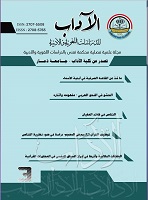Using the Holy Qur'an in the Lexicon: A Study in the Light of Intertextuality Theory
DOI:
https://doi.org/10.53286/arts.v1i3.235Keywords:
Intertextuality, Lexicon, Text, The Holy Qur'an, ContextAbstract
This is why the use of Quranic intertextuality went into three approaches: quote intertextuality, referral intertextuality, and suggestive intertextuality. Each approach had characteristics that distinguish it from others. For example, the quote intertextuality differs from others like of the quote intertextuality differs from referral intertextuality and suggestive intertextuality ones, because it is located in lexical entries with limited connotation. As for referral intertextuality, it is located in the lexical entries with an open connotation that work to invoke Quranic verses in more than one location, as in the case with suggestive intertextuality.Downloads
Downloads
Published
How to Cite
Issue
Section
License
Copyright (c) 2021 ألطاف محمد عبد الله الفندي

This work is licensed under a Creative Commons Attribution 4.0 International License.
Copyright and Licensing
copyright is retained by the authors. Articles are licensed under an open access Creative Commons CC BY 4.0 license, meaning that anyone may download and read the paper for free. In addition, the article may be reused and quoted provided that the original published version is cited. These conditions allow for maximum use and exposure of the work.



